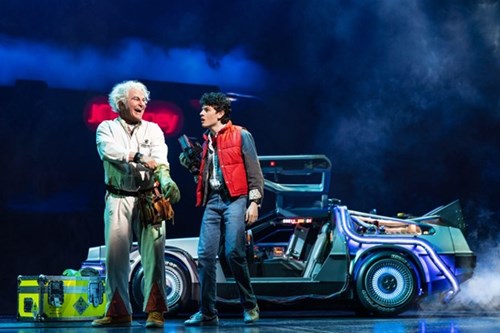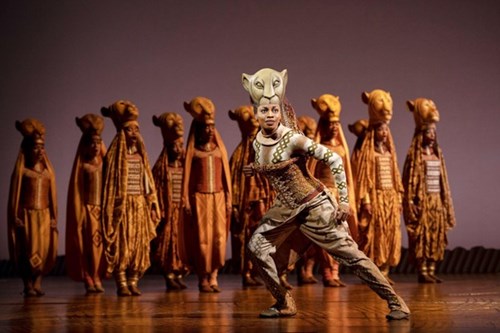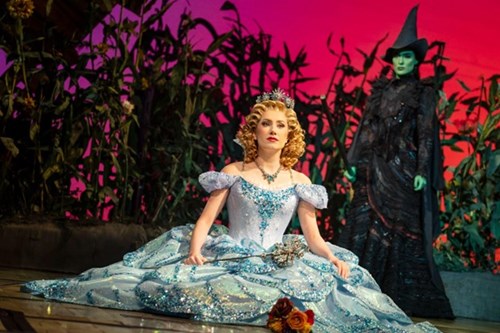
Anyone who has ever strolled down the Great White Way can attest to the electric energy that pulsates through the heart of New York City. Lined with world-class theatres, Broadway is the epicenter of American theatre and a testament to the power of performance art. It's a place where stories come alive, characters captivate, and the line between reality and fantasy blurs. Every element designed and employed in a Broadway production – from the lighting and costumes to the choreography, contributes to this enchanting illusion. One key element often overlooked but integral to the magic of theatre is the use of props.
Props are the physical items used by actors during performances to convey aspects of the narrative, define character, or enhance the setting. The importance and role of props in theatre productions are as multifaceted as the productions themselves. They can be anything from a glass of water to a vintage car, a letter opener, or a grand piano. Props can highlight a character's personal style, provide critical plot points, or even steal the show. They are the unsung heroes that add depth, realism, and authenticity to the world the production is trying to create.
Let’s pull back the curtain and take a behind-the-scenes look at some of Broadway's most iconic props. These props have not only played pivotal roles in their respective productions but have also had a significant impact on theatre history. They are the pieces that have made audiences gasp, laugh, or cry - they've become as synonymous with the shows they were used in as the stars who used them. So, without further ado, let's dive into the fascinating world of Broadway's most iconic props.
Props serve as essential tools that aid in storytelling, providing tangible elements that can help an audience better understand the narrative. They offer visual clues about the time period, setting, and the characters' personalities or situations. For example, a vintage typewriter may suggest a scene set in the past, while a smartphone indicates a modern setting.
Creating props for theatre productions requires a great deal of creativity, innovation, and technical skill. Props masters and their teams work closely with the directors, set designers, and costume designers, to ensure that each prop fits seamlessly into the world of the play. Prop creation can involve a wide range of techniques, from traditional carpentry and metalworking to cutting-edge 3D printing and digital design.
In the case of historical or period pieces, the props team might need to conduct extensive research to ensure authenticity. Alternatively, for fantasy or futuristic productions, they have the freedom to imagine and create unique, never-before-seen items. Either way, the creation of props is a critical aspect of theatre production, combining artistry with craftsmanship to bring the written word to life on the stage.

Among the myriad of Broadway productions, The Lion King stands out for its innovative use of puppetry as props. This intricate puppetry, designed by director Julie Taymor, ranges from simple handheld devices to large-scale mechanical constructs. Animal characters are represented by a unique blend of actors and puppets, creating an unforgettable visual spectacle that has captivated audiences worldwide.
The puppets in The Lion King are not merely props; they are extensions of the characters themselves, contributing significantly to the unique visual aesthetic of the show. The characters come to life through a harmonious blend of human performance and puppet manipulation, blurring the lines between the two. For instance, the towering giraffes are actors on stilts with extended puppet necks, whereas the hyenas feature actors manipulating puppet heads. These puppets, as props, play a pivotal role in creating the magical world of the African savannah. They provide depth, movement, and a sense of realism to the setting.
In the realm of Broadway's most memorable props, Little Shop of Horrors’ Audrey II, the man-eating plant, holds a special place. This monstrous green plant is not just a prop, but a leading character in the musical, central to the narrative and its macabre humor. The plant starts as a small potted oddity and grows into a massive, menacing creature, demanding to be fed with human blood.
Designing and operating Audrey II presented unique challenges. The prop had to be visually impressive, capable of movement, and large enough to "swallow" characters whole. Nicholas Mahon, the puppeteer behind Audrey II, crafted a series of four progressively larger puppets to represent the plant's growth throughout the show. The design was a work of art, a combination of foam rubber, latex, and fabric, painted in lush, vivid shades of green. Despite its technical complexity, Audrey II became an iconic prop and a beloved character, earning a place in the annals of Broadway history.
In the enchanting world of Aladdin, one prop takes center stage - the magical Genie's Lamp. This golden lamp, though small in size, plays an integral role in the narrative. It is the home of the effervescent Genie, and the catalyst for Aladdin's rags-to-riches transformation. The lamp, with its sleek design and bright golden hue, is a visual symbol of hope, dreams, and the magical possibilities that lie ahead.
The Genie's Lamp is more than just an accessory in the production. It contributes significantly to the magical atmosphere of the show. When the lamp is rubbed, it's not just the Genie that appears; a whirlwind of lights, smoke, and dramatic sound effects accompany his grand entrance. This spectacle, centered around a simple prop, encapsulates the enchantment of the show. In the case of the Genie's Lamp in Aladdin, the prop becomes a beacon of magic, a testament to the power of wishes, and of course, the heart of some of Broadway's most memorable moments.
When it comes to iconic props, few can compete with the DeLorean time machine from Back to the Future. Originally made famous by the 1985 film, the DeLorean has since been brought to life on the stage. This sleek, silver vehicle, with its gull-wing doors and retro-futuristic design, is instantly recognizable. It's not just a car; it's a symbol of adventure, technological marvel, and the thrilling unpredictability of time travel.
Bringing the DeLorean to the stage was a significant undertaking. The prop needed to maintain its iconic look while being functional for a live performance. The result is an impressive piece of stagecraft. The DeLorean prop is filled with motors, lights, smoke machines and speakers for the time-travel effects, and meticulous detailing to maintain the look of the original car.

Wicked, the untold story of the witches of Oz, takes us on a magical journey through a land filled with wonder, friendship, and a quest for acceptance. The plot revolves around Elphaba, a green-skinned, misunderstood girl, who eventually transforms into the infamous Wicked Witch of the West. Two of the most persistent symbols in this narrative are Elphaba's witch hat and broom.
The witch hat, with its high, pointed peak and wide brim, and the simple wooden broom are more than mere props. They are integral to Elphaba's transformation and identity. The hat is a gift from Glinda, intended initially as a cruel joke, but it becomes a symbol of Elphaba's acceptance of her uniqueness. The broom, an ordinary cleaning tool, becomes her transport, a symbol of her power and defiance.
The design of these props is simple yet impactful. Elphaba's hat is black, a nod to the classic image of a witch, while her broom is rustic and practical. Their simplicity only amplifies their symbolic weight within the narrative. These props, in their own right, have become iconic elements of Wicked, epitomizing the journey of a woman embracing her true self, regardless of societal norms and expectations.
The world of theatre is a realm of magic, where stories unfold, characters come alive, and audiences are drawn into different realities. Props play a significant role in creating these theatrical experiences. From puppetry and man-eating plants to magical lamps, iconic cars, and symbolic hats and brooms, these props have not only enriched the narrative and visual aesthetic of their respective shows but have also left a lasting impact on audiences and the theatre industry as a whole.
Next time you find yourself at a Broadway show or any theatre production, pay a little more attention to the props. Consider their design, their significance within the story, and the craftsmanship that has gone into their creation. Remember that they are not just inanimate objects; they are crucial tools of storytelling, silent performers that breathe life into the narrative, and often, icons that transcend the boundaries of the stage to become part of our cultural fabric. In the magical world of theatre, props are indeed the unsung heroes, silently contributing to the spellbinding spectacle that keeps us coming back for more.